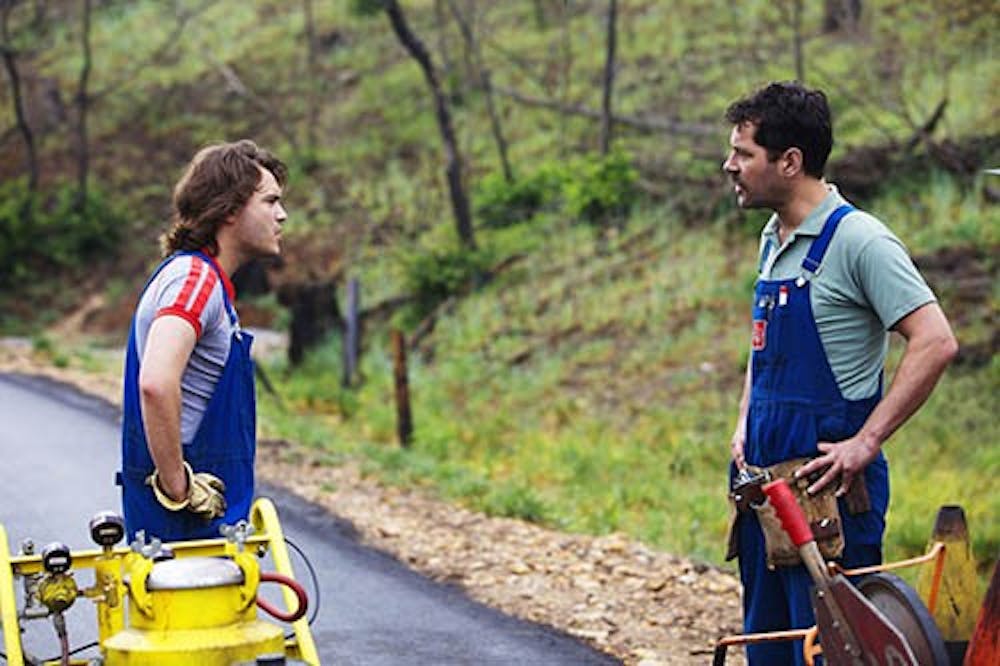The solitude in the torched wilderness depicted in “Prince Avalanche” paints a beautiful and quiet picture that is often interrupted by its two main characters, Alvin (Paul Rudd) and Lance (Emile Hirsch).
“Can’t we just listen to the silence,” Alvin yells more than once at Lance.
But it’s not so much in anger at his coworker as it is at himself.
Alvin is a highway road worker who has hired his girlfriend’s brother, Lance to help him paint miles and miles of Texas highways. Alvin cherishes his time, even if temporary, alone in the countryside to reflect on his own life and the relationship with his girlfriend. Lance, a man fixated on his own sexual conquests, resents the solitude.
David Gordon Green’s latest directorial effort tackles the bond that grows between the two characters as they are presented with the each other’s challenges and the lives they are seemingly escaping. The opening sequence is honestly one of the best of the year so far, using clever visuals and the natural sound of the environment while forgoing dialogue.
There’s another scene that shines above the rest. One where Alvin finds the ashes of a home and talks to a lady sifting through the rubble for pieces of her home that may have survived. Later, Alvin returns to the house and pantomimes coming home to his girlfriend. Watching Alvin climb stairs that aren’t really there, greet the girlfriend he hadn’t seen throughout the film is incredibly powerful and one of the first realizations the audience has on how troubled Alvin is.
Lance is a bit of a one-dimensional character but grows as Hirsch gets a better handle on him as the film continues. However, Alvin is a balanced character, played well by Rudd. It’s one of my favorite performances so far this year.
“Prince Avalanche” has an almost bare script, but Green milks as much out of it as he can. He uses closeups and cuts almost flawlessly to depict the sparse, almost sad landscape.
There aren’t many big, direct challenges to the characters. Instead, Green focuses on how it impacts Alvin and Lance while pairing it with the symbolism of the environment.
As the film concludes, it becomes evident how simple and minimalistic the film is overall. It focuses on how the dynamic between its two characters grows, not necessarily on the conflict that each develops. But the third act is both great and frustrating. Green stylish choices are a bit too bold and heavy-handed in some scenes, including one where “I love you so much” is written on the screen above Alvin.
What the film lacks in the final act is a cleaner resolution. As it is, the pacing of the film is not traditional, yet succeeds in replicating the feelings the two characters have at different points of the film.
The interactions between the two are simultaneously amusing and touching. The unlikely bond and the quirkiness of the characters is what makes watching it so enjoyable.
Prince Avalanche is a film where the individual parts are greater than the whole product. But when you evaluate the individual parts for what they are worth, you come away rather satisfied.


